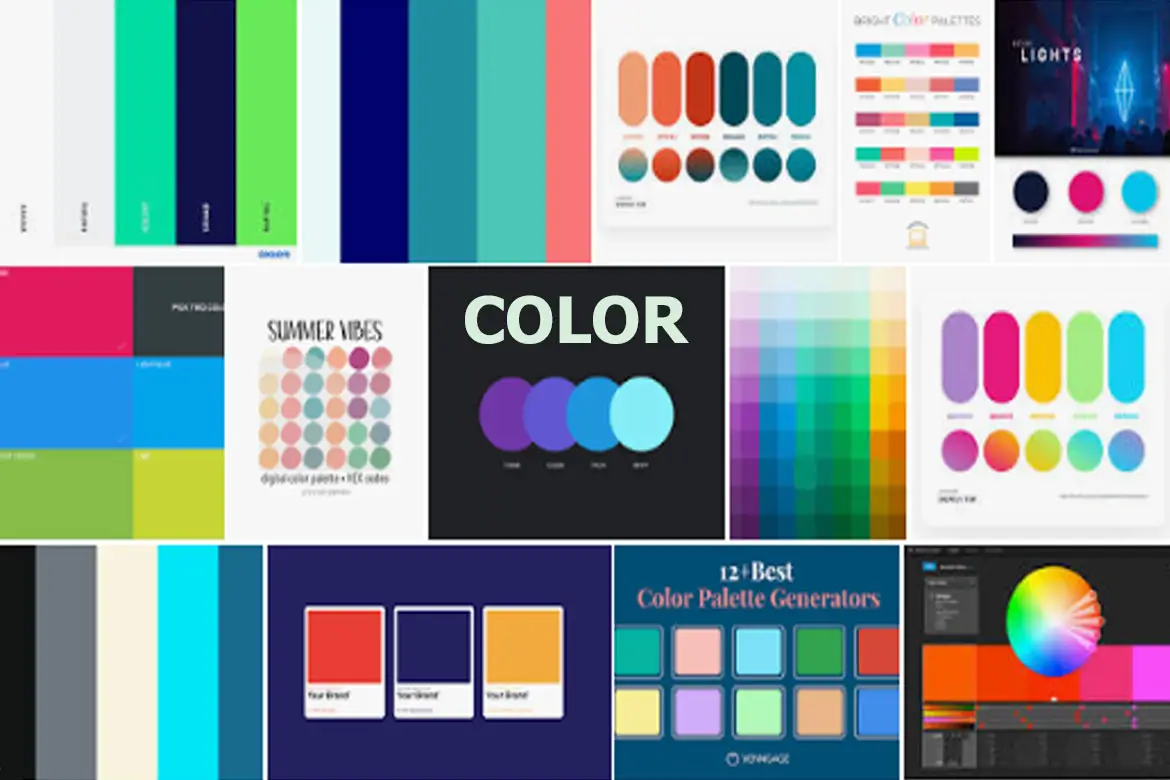Color, Technical, and Promotional Considerations for Web3 Monetization
Transforming visual art into digitized art for web display and NFTs is not inherently difficult but there are numerous considerations required along the way to a successful Web3 monetization effort. Over twenty items in this article identify color, technical, and promotional considerations
Color Usage in the Contemporary Internet Environment
In the digital age, visual artists face new challenges and opportunities as they adapt their traditional artworks to the online realm. The internet environment demands special attention to color usage due to the diversity of devices, screen resolutions, and viewing conditions. Problems and risks that artists should be aware of include:
- Color Inconsistency: Different screens can display colors differently, leading to variations in how audiences perceive the artwork.
- Color Management: Lack of color management can result in color shifts or inaccuracies during the transformation process.
- Web-Only Colors: While there are no colors exclusive to the web, some colors may appear significantly different on various devices, affecting the intended visual impact.
Specifications for Web Display Art
When preparing art for web display, artists should follow generally accepted specifications to ensure optimal presentation and smaller file sizes. Some methodologies and processes include:
- File Format: Use web-friendly formats like JPEG, PNG, or GIF, balancing image quality and file size.
- Color Profiles: Convert images to sRGB color space to ensure consistent display across browsers and devices.
- Compression: Utilize lossless or minimal-loss compression techniques to reduce file size without compromising quality.
Considerations for Artists When Selecting Color Palettes and Saving Files
To create engaging web art, artists should consider the following factors:
- Color Meaning: Understand the psychological and emotional impact of different colors to evoke desired responses.
- Contrast and Legibility: Ensure sufficient contrast between foreground and background elements for readability.
- Accessibility: Choose colors that are inclusive and accessible to people with color vision deficiencies.
- File Sizes: Optimize images to strike a balance between visual quality and load times.
Key Color Considerations for Minting NFTs
NFTs represent the pinnacle of digital art ownership, and color plays a crucial role in their success. Key elements to consider when minting NFTs include:
- High Definition: High-resolution images are preferred for NFTs to showcase fine details and enhance perceived value.
- Specifications for NFTs: Platforms and marketplaces may have specific image size and format requirements for minting NFTs.
- Options and Flexibility: Offering different editions or variations of artwork can attract a broader audience.
Caveats for Smart Contracts and Marketing
When minting NFTs, artists should include appropriate caveats in their smart contracts or marketing efforts to clarify terms and avoid misunderstandings. This may include information about:
- Limited Editions: Clearly define the total number of NFTs available for an artwork.
- Resale Royalties: Specify if the artist is entitled to a percentage of future resales.
- Provenance: Establish a transparent record of ownership and the authenticity of the artwork.
Transforming Art from Web Display to NFTs
Artists must adapt their work for both low-resolution web displays and high-resolution NFTs. Some tips and best practices include:
- Original Files: Keep high-resolution, lossless versions of artworks as a foundation for NFT minting.
- Layered Artwork: Organize artwork layers to facilitate scaling and adjustments for different formats.
- Test Renders: Preview and compare the visual impact of art at various resolutions before finalizing NFT minting.
References and Further Reading
For additional insights and technical guidance, consider exploring resources like:
- Online forums and communities for artists and NFT enthusiasts.
- Tutorials and guides on color management and digital art preparation for web and NFTs.
- Blogs and interviews of successful artists who have ventured into the NFT space.
The twenty-two items listed here require examination by artists, and almost all of them need additional information. Creatology will expand the educational effort in future posts.
One way to stay current on changes to the curriculum is to sign up for the newsletter – look for the red signup button near the top of every page. Another good practice is to check for changes and new interests in the ‘Site Guide,’ always accessible from the main menu.
Wishing You Success
May your artistic journey into the realm of digitized art and NFTs be filled with creative inspiration, technical proficiency, and a vibrant palette that resonates with audiences around the world. Embrace the transformative power of technology while staying true to your unique artistic vision. Wishing you success in captivating the hearts and minds of art enthusiasts in both the virtual and physical worlds!

